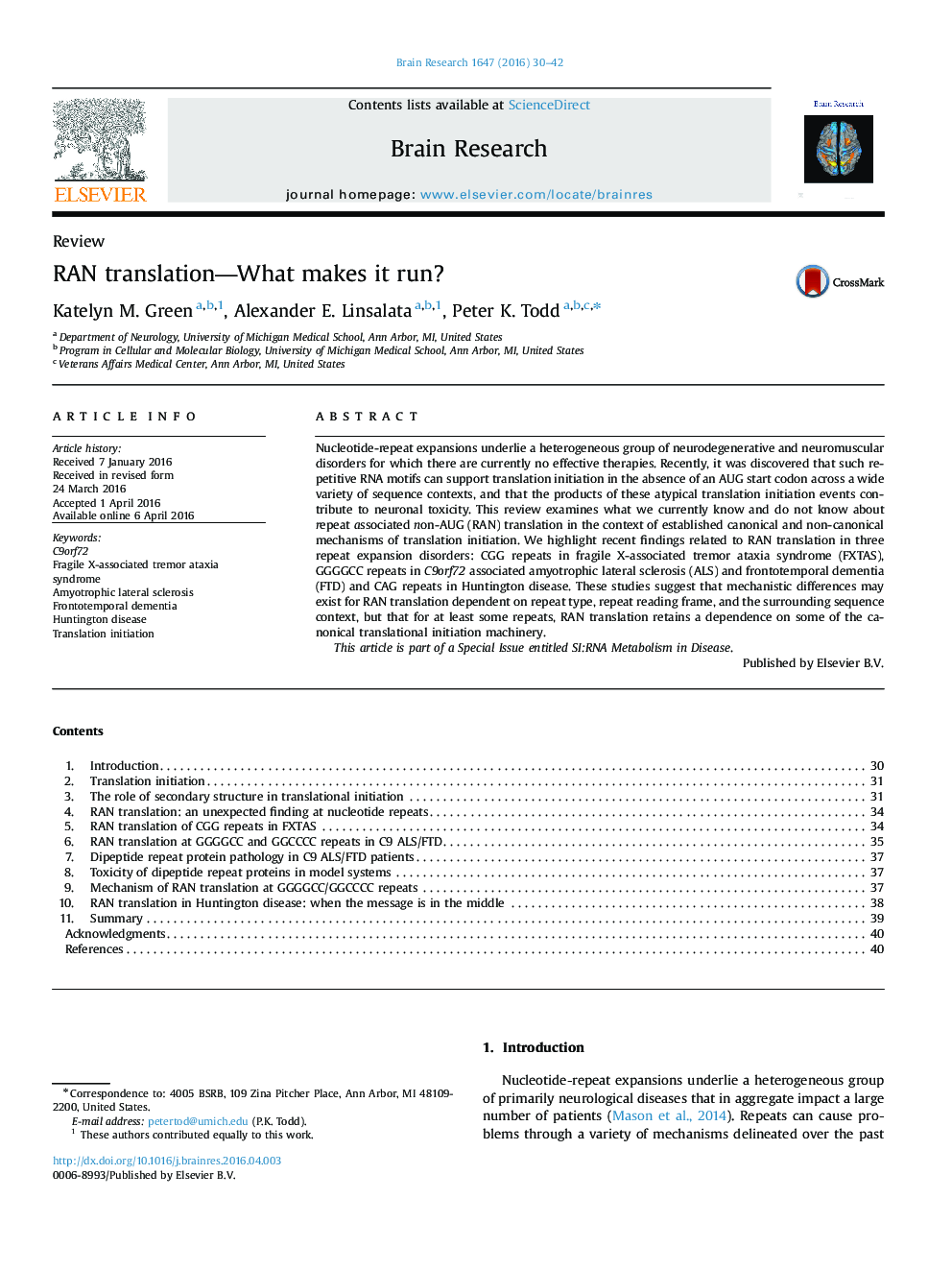| Article ID | Journal | Published Year | Pages | File Type |
|---|---|---|---|---|
| 6262301 | Brain Research | 2016 | 13 Pages |
â¢Repeat-associated non-AUG (RAN) translation produces toxic repeat proteins.â¢RAN translation utilizes a novel initiation mechanism to make these proteins.â¢Repeat content and context influence RAN translation toxicity and efficiency.â¢How exactly RAN translation relates to known modes of initiation remains unclear.â¢RAN translation is an intriguing therapeutic target in repeat expansion disorders.
Nucleotide-repeat expansions underlie a heterogeneous group of neurodegenerative and neuromuscular disorders for which there are currently no effective therapies. Recently, it was discovered that such repetitive RNA motifs can support translation initiation in the absence of an AUG start codon across a wide variety of sequence contexts, and that the products of these atypical translation initiation events contribute to neuronal toxicity. This review examines what we currently know and do not know about repeat associated non-AUG (RAN) translation in the context of established canonical and non-canonical mechanisms of translation initiation. We highlight recent findings related to RAN translation in three repeat expansion disorders: CGG repeats in fragile X-associated tremor ataxia syndrome (FXTAS), GGGGCC repeats in C9orf72 associated amyotrophic lateral sclerosis (ALS) and frontotemporal dementia (FTD) and CAG repeats in Huntington disease. These studies suggest that mechanistic differences may exist for RAN translation dependent on repeat type, repeat reading frame, and the surrounding sequence context, but that for at least some repeats, RAN translation retains a dependence on some of the canonical translational initiation machinery.This article is part of a Special Issue entitled SI:RNA Metabolism in Disease.
